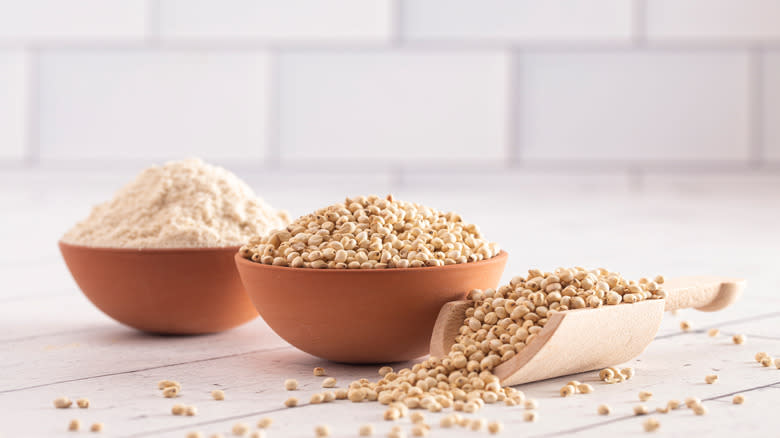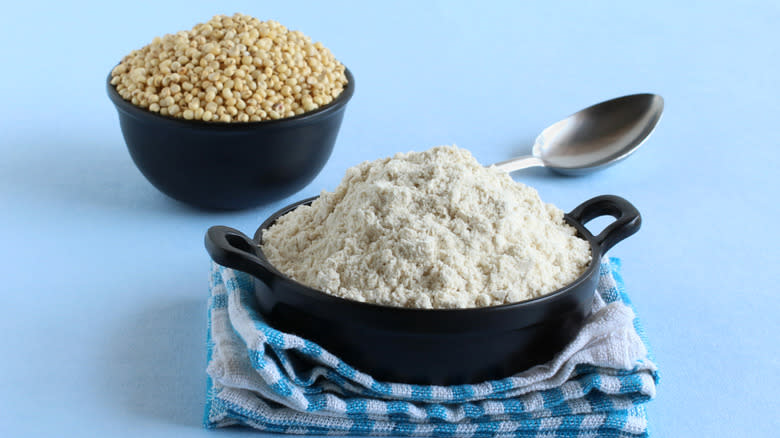What To Consider Before Swapping Wheat Flour With Sorghum

When you're gluten-free, it takes a lot of trial and error to know the types of gluten-free flour you can use in place of regular flour. Should you use tapioca or arrowroot flour to bake bread? What's the ratio of sunflower seed flour to all-purpose flour? There's a lot to consider when making the switch, and the same goes for using sorghum in place of wheat flour.
As the name implies, wheat flour is the powdered version of the wheat grain. Wheat flour comes in various forms -- whole wheat flour, all-purpose flour, and bread flour, to name a few. While they can be employed for various purposes, wheat flour is often used to make pastries, pies, cakes, and other baked goods.
Derived from the cereal grain of the same name, sorghum flour is a beige powder used to make baked goods. Although its color may cause recipes to turn out darker, sorghum flour's soft texture and slightly sweet flavor make it an ideal gluten-free alternative for baking. However, there are a few things to keep in mind when using it in place of wheat flour.
Read more: 30 Types Of Cake, Explained
Sorghum Flour Is Rarely Used Alone

While sorghum flour does have a similar texture to wheat flour, its lack of gluten means that binding agents like cornstarch or xanthan gum must be used in conjunction with it in order to get a stretchy texture. The gluten-free flour also tends to be dry, so using more oil, butter, or eggs than a recipe calls for will give it the moisture it needs.
Despite the need for extra fat, there's a 1:1 ratio for sorghum flour and wheat flour. To make up for the dryness, and disguise the bitter aftertaste it gives food, it can also be mixed with rice flour, corn flour, millet flour, or potato starch.
Since it's smoother than other gluten-free flour, sorghum flour is great for all your soft, fluffy pies, breads, cakes, and pastries. As a prominent ingredient in many gluten-free all-purpose flour mixes, you can combine it with ingredients like almond flour or tapioca flour to make sweet treats like almond crinkle cookies or gluten-free cornbread.
Read the original article on Tasting Table.

